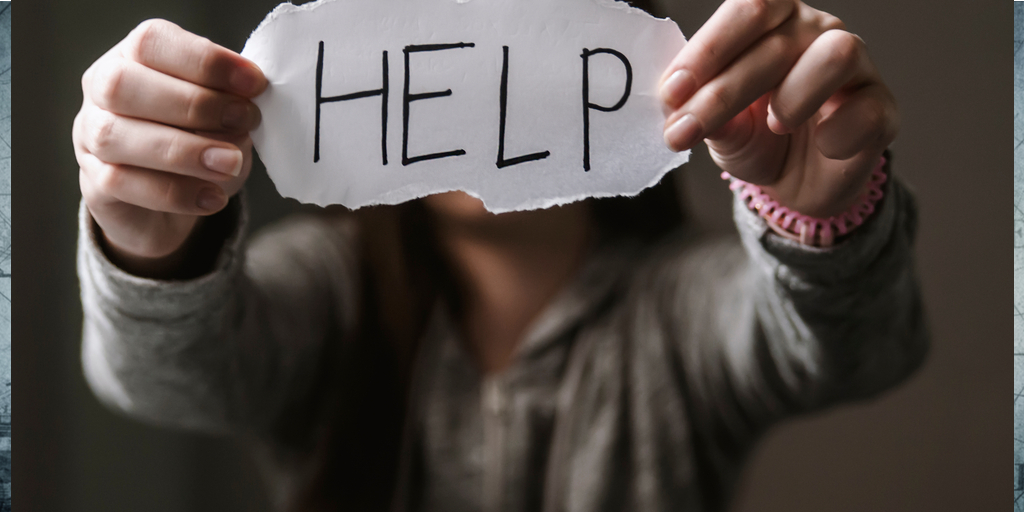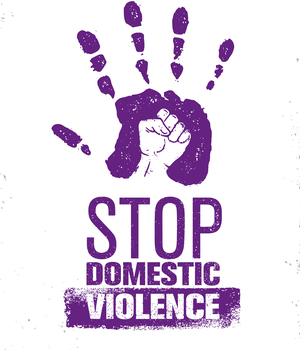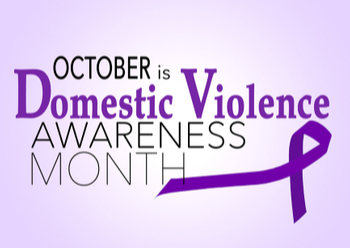Reading Time: 14 minutes

Domestic Violence Resources for Mental Health & Addiction
Each year, 10 million women and men in the U.S. experience domestic violence via an intimate partner.1 Substance misuse is often involved – by the abuser, the victim, or both. And victims often struggle with depression and suicidal behavior due to their experiences.1
Three issues – domestic violence, mental health, and addiction – are tightly interwoven with domestic violence. An awareness of how these interrelate is necessary to understand domestic violence, how to prevent or stop it, and how to recover from it. We also curated 40 valuable resources to help break the cycle.
Find Rehab Centers That Specialize In Abuse By State
What Are Domestic Violence and Intimate Partner Violence (IPV)?
Domestic violence and intimate partner violence (IPV): These terms are often used interchangeably, and they both refer to patterns of abusive behavior in relationships.
 Some organizations make a distinction between the two based on the type of relationship involved.2 Domestic Violence (DV) refers to violence that takes place within a household. It can be between any two people – parent and child, siblings, spouses, or roommates. Intimate Partner Violence (IPV), on the other hand, only occurs between romantic partners that don’t have to be living in the same household. IPV is also sometimes called Intimate Partner Domestic Violence (IPDV), which adds further overlap to the terms’ use.3
Some organizations make a distinction between the two based on the type of relationship involved.2 Domestic Violence (DV) refers to violence that takes place within a household. It can be between any two people – parent and child, siblings, spouses, or roommates. Intimate Partner Violence (IPV), on the other hand, only occurs between romantic partners that don’t have to be living in the same household. IPV is also sometimes called Intimate Partner Domestic Violence (IPDV), which adds further overlap to the terms’ use.3
The National Domestic Violence Hotline further defines this abuse as behavior that is used by one person to gain or maintain power and control over another person.3 The abuse can be sexual, physical, or psychological.
It may take the forms of:4
- Physical abuse: Harming someone with physical force – includes slapping, shoving, pushing, strangling, burning, beating, and any other forms of physical violence
- Sexual abuse: Forcing someone to perform sexual acts
- Verbal abuse: Manipulating someone’s thoughts and emotions with words
- Financial abuse: Monitoring or controlling monetary resources, or not allowing someone to access money
- Emotional abuse: Constantly insulting and degrading someone; playing on their insecurities
- Stalking: Directing a pattern of behavior at a person that causes them to fear for their safety or experience substantial emotional distress; tactics may include unwanted phone calls, texts, gifts, surveillance, personal contact, and threats.
Who Experiences Domestic Violence?
Domestic violence affects people of all ages, ethnicities, and socioeconomic classes. Statistics reveal the prevalence of the issue1:
- 33% of women and 25% of men have experienced some form of physical violence by an intimate partner (slapping, shoving, pushing).
- 20% of women in the U.S. have been raped. Around 1 in 4 of these victims were raped by an intimate partner.
- 3 million women and 5.1 million men in the U.S. have been stalked. 60.8% of female victims and 43.5% of male victims report their stalker was a current or former intimate partner.
- 72% of all murder-suicides involve an intimate partner. 94% of these victims are female.
The numbers jump even higher for certain demographics:
- The U.S. Bureau of Justice reports that women make up 85% of domestic violence victims.5
- Among African Americans, 1% of Black women and 40.1% of Black men have experienced intimate partner physical violence, intimate partner sexual violence and/or intimate partner stalking.7
- 5% of Native women experience physical intimate partner violence in their lifetimes; 66.6% experience psychological abuse.8
- Women with disabilities experience intimate partner violence at twice the rate of other populations.9
- Men with disabilities were more likely to have experienced intimate partner stalking and intimate partner psychological aggression than their non-disabled peers.9
Does Substance Misuse Play a Role in Domestic Violence/IPV?
 Researchers have discovered that substance misuse is often involved when domestic violence occurs.10 Additionally, victims of domestic violence/IPV often turn to substances as a coping mechanism after this traumatic experience.10
Researchers have discovered that substance misuse is often involved when domestic violence occurs.10 Additionally, victims of domestic violence/IPV often turn to substances as a coping mechanism after this traumatic experience.10
Researchers have found that, in general, excessive drug or alcohol use increases the risk of becoming an abuser and the risk of becoming a victim of domestic violence.11 Specifically, the American Society of Addiction Medicine reports that both abusers and victims are 11 times more likely to be involved in incidents of domestic violence on days when they use substances.12 In fact, up to 60% of domestic violence incidents involve substance misuse.13
Perpetrators of sexual abuse in particular often rely on drugs or alcohol to assist them with their assault.15 Alcohol can reduce a person’s ability to make decisions or can render the victim completely unconscious. The perpetrator may slip drugs into the victim’s drink to prevent them from resisting the assault. Around 50% of reported sexual assaults involve alcohol use by the victim, perpetrator, or both.14
Victims of these crimes are at higher risk of misusing substances after their traumatic experience.14 Young adults who experience dating violence are more likely to have substance use disorders and mental health disorders within six months of the abuse.16 And domestic abuse victims are 70% more likely to drink excessive amounts of alcohol than individuals who are in healthy relationships.17
Signs That Someone is a Victim of Domestic Violence?
Because victims are often fearful or ashamed, they may not report domestic violence or IPV or may not be willing to admit they have experienced an assault.19 Others may not recognize their experience as abuse.19
Following are signs to look for that indicate you are experiencing domestic abuse:18
- You experience pain intentionally inflicted by an object or hand (slapping, pushing, punching, cutting, stabling, etc.).
- You are repeatedly intimidated, humiliated, yelled at, or criticized.
- You constantly fear the person or feel fearful before their arrival.
- You are controlled or dominated.
- You are objectified.
- You blame yourself for the person’s abusive behavior.
- You are forced (physically or verbally) to do things you don’t want to do.
- You are threatened.
- You are isolated or forbidden to see friends and family.
- Your personal belongings are confiscated, monitored, or destroyed.
- All of your physical movements are monitored.
And here are red flags to watch for that indicate a loved one is being abused:20
- They make constant attempts to please their partner.
- They act nervous and uneasy around the topic of their partner.
- They receive frequent, harassing texts or calls from their partner.
- They describe their partner as jealous or possessive.
- They tell you stories frequently about accidental injuries to explain scratches and bruises.
- They miss work, school, or other obligations with no explanation or frequent excuses.
- They show signs of depression or anxiety.
- They make excuses for their partner’s behavior.
- They have low self-esteem.
- They wear long sleeves in warm places.
- They wear sunglasses indoors.
- They get angry when you try to reason with them about their partner.
How Can Someone Find Help to Escape Domestic Violence?
If you or someone you know is experiencing domestic violence, help is available. Do not wait to take action. Resources are available to help victims. They can get out, even when it seems impossible. With the right steps, victims can live free from fear and abuse. These steps can include:
 Acknowledge the abuse. Denial is common in domestic abuse situations. The first step to get help and end the abuse is to acknowledge it. It’s happening. It’s wrong. It’s not your fault. And you deserve better.
Acknowledge the abuse. Denial is common in domestic abuse situations. The first step to get help and end the abuse is to acknowledge it. It’s happening. It’s wrong. It’s not your fault. And you deserve better.- Create a safety plan. As you take steps to get away from the abuser, put some things in place to protect yourself in the meantime.22 A safety plan might include:
- Avoid triggers: Be mindful of what triggers your partner, such as words, actions, or clothing, and try to avoid them if you can. Remember, this is only temporary as you work on the rest of your plan.
- Prepare your surroundings: If you’re home alone and your partner will be arriving, hide household items that could be used against you. Get rid of solid items on shelves such as sculptures and paperweights, for example.23
- Identify safe areas: Before your partner comes home, put yourself in an area of your house that is safe, away from stairs and rooms where there are sharp objects, such as the kitchen.23
- Create codewords: Choose secret phrases to let people know you need help. Teach the people with whom you communicate regularly these codewords so they know when to call the police. For example, if you’re in danger, but your partner is listening, you could say “I could use some pizza right now,” and that means to call 911 for you.23
- Make an escape plan: Leave essential belongings such as documents and credit cards with a friend, if possible. Plan an escape route – which door you can exit through, keys ready, destination in mind. With these steps in place, when it’s time to go, you can quickly leave with just yourself (and children, if applicable), and get your essentials from your friend later.21
- Reach out for help. Hundreds of support services are available. Use one or more of them. If you think your partner may be monitoring your actions, you can take the following steps to avoid detection as you reach out for help.
- Phone: Use a public phone or a friend’s phone to call for support.
- Computer: Use a computer at a library or other public place to search for/access help.
- Confidentiality: Share your abuse situation with someone you can trust and someone that is supportive. Helplines offer this type of confidentiality.
- Work leave: Many employers offer domestic abuse leave under the federal FMLA. Ask your HR department if this is available.
- Hotlines: Call a hotline to speak with a trained advocate to receive help 24/7.
- Get a restraining order. Once you’ve reached a safe place, if you think it’s necessary, get a restraining order. Keep it with you at all times. This will allow you to take legal action if your abuser contacts you or threatens you in the future.
Following are 40 resources to help you learn more about domestic violence and IPV, find help when you need it, and support loved ones who have been victimized.
Domestic Violence: Mental Health and Substance Abuse Organizations
 Asian Pacific Institute on Gender-Based Violence: A national resource center on domestic violence, sexual violence, trafficking, and other forms of gender-based violence in Asian/Asian-American and Pacific Islander communities.
Asian Pacific Institute on Gender-Based Violence: A national resource center on domestic violence, sexual violence, trafficking, and other forms of gender-based violence in Asian/Asian-American and Pacific Islander communities.- Esperanza United: This is the largest Latinx organization in the country focused on ending gender-based violence.
- Futures without Violence: This organization provides policies and programs to empower individuals and other organizations to end violence against women and children around the world.
- Mental Health America: An organization that provides mental health resources, including screening tools.
- National Center on Domestic Violence, Trauma & Mental Health: This organization offers support, training, and consultation to treatment providers, policymakers, and other professionals and advocates to improve resources for survivors and their children.
- National Resource Center for Domestic Violence: This initiative works to improve community response to domestic violence and prevent its occurrence. Offers training and resource development and other support.
- Substance Abuse and Mental Health Services Administration (SAMHSA): This U.S. Department of Health and Human Services agency leads public health efforts to reduce the impact of substance abuse and mental illness.
- UjIma: This is the National Center on Violence Against Women in the Black Community. The organization is dedicated to ending domestic, sexual, and community violence in the Black community.
Domestic Violence: Online Resources for Addiction and Mental Health
- Coercion Related to Mental Health and Substance Abuse: This toolkit provides guidance on integrating the issues of mental health and substance use coercion into intimate partner violence assessments in treatment settings.
- Domestic Violence Toolkit: This free download offers information on preventing, assessing, and responding to domestic violence. Designed for health centers and domestic violence programs.
- VAWnet: This online network is focused on violence against women and gender-based violence. It offers a library of resources to advance the efforts to end gender-based violence.
Domestic Violence: Resources and Organizations for Youth
- Dating Matters – Strategies to Promote Healthy Teen Relationships: This comprehensive teen dating violence prevention model was developed by the CDC to stop teen dating violence before it starts. It offers prevention strategies for individuals, schools, families, and neighborhoods, focusing on teaching 11 to 14 year-olds healthy relationship skills before they begin dating.
- Preventing Teen Dating Violence: This fact-sheet from the CDC offers information about teen dating violence as well as prevention strategies.
- Teen Dating Violence: The CDC’s website devoted to teen dating violence. Offers statistics, information, and prevention strategies.
Domestic Violence: Hotlines and Crisis Centers
- Love is Respect National Teen Dating Abuse Helpline: Call 866-331-9474 or text LOVEIS to 22522. Offers 24/7 information and support for young people ages 13 to 26 who have questions or concerns about their romantic relationships.
- National Domestic Violence Hotline: Call 800-799-7233 or text START to 88788 for free, confidential support 24/7.
- Rape, Abuse & Incest National Network’s National Sexual Assault Hotline: Call 800-656-HOPE. Callers are connected with trained staff members in their area to receive support regarding sexual assault.
- Rape, Abuse & Incest National Network’s National Sexual Assault Online Hotline: Visit rainn.org for live chat with a trained support specialist, 24/7.
- SAMHSA National Helpline: 800-662-4357 Call for free, confidential support 24/7. Offers treatment referral and information for individuals struggling with mental or substance use disorders.
Domestic Violence & IPV Shelters
- Domestic Shelters: Search by zip code or city to find shelters nearby. The website also offers additional resources and information.
- Family Violence Prevention & Services: This program is the main federal funding stream for the support of shelters and related assistance for victims of domestic violence and their children.
- Safe Housing Partnerships: This organization offers resources, strategies, and information to help providers and advocates enhance services to domestic violence victims who are at risk of becoming homeless.
- Women’s Law: Search for shelters by state. Also provides information about abuse and legal information for victims.
Domestic Violence: Suicide Prevention Support and Services
- National Action Alliance for Suicide Prevention: This organization works to transform health systems, transform communities, and change the conversation about suicide.
- National Suicide Prevention Lifeline: 800-273-8255 (English) Crisis counselors can talk through issues and refer callers to treatment centers nearby for additional care.
- Suicide Prevention Resource Center: Offers information about programs, training, and organizations related to suicide prevention.
Domestic Violence & IPV Survivor Support Groups
 Domestic Shelters Victims and Survivors Community: This Facebook group is designed as a safe place for domestic abuse victims, survivors, and advocates to support one another. All members can post questions, articles, and other helpful content.
Domestic Shelters Victims and Survivors Community: This Facebook group is designed as a safe place for domestic abuse victims, survivors, and advocates to support one another. All members can post questions, articles, and other helpful content.- Fort Refuge: This is an online community of abuse survivors. The community is anonymous, free, and is not affiliated with any political or religious agenda.
- National Domestic Violence – Local Resources: Search for support in your area. Filter by area and type of support needed.
Domestic Violence: YouTube Channels
- National Coalition Against Domestic Violence: Offers videos to give voice to victims and survivors with the goal of changing society to zero-tolerance for domestic violence.
- National Network to End Domestic Violence: This social change organization offers videos focused on ending violence against women.
- Refuge: Offers videos and other services for women and children escaping domestic violence.
- #SurvivorSpeaks: A curated playlist of videos featuring domestic violence survivors speaking about abuse.
Domestic Violence: X (Twitter) Advocates
- Break the Silence: This is the international voice of domestic violence.
- NCADV: This Twitter site for the National Coalition Against Domestic Violence works to create a culture where everyone is safe, empowered, and free from domestic violence.
- The Network: This nonprofit organization is dedicated to improving the lives of those harmed by domestic violence.
Domestic Violence: Months of Recognition
- National Domestic Violence Awareness Month: October is a time to acknowledge domestic violence survivors and be a voice for its victims.
- National Stalking Awareness Month: January is an annual call to action to recognize and respond to the serious crime of stalking.
- Teen Dating Violence Awareness and Prevention Month: February is a time to raise awareness about teen dating violence and promote safe, healthy relationships.
REFERENCES
- NCADV Statistics. (n.d.). National Coalition Against Domestic Violence. Retrieved August 1, 2022, from https://ncadv.org/statistics
- Intimate partner violence vs. domestic violence – YWCA Spokane. (2021, January 5). YWCA Spokane. https://ywcaspokane.org/what-is-intimate-partner-domestic-violence/
- Understand relationship abuse. (2020, August 25). The Hotline. https://www.thehotline.org/identify-abuse/understand-relationship-abuse/
- Shaw, G. (n.d.). Who is Doing What to Whom? Determining the Core Aggressor in Relationships Where Domestic Violence Exists. Retrieved from https://ncadv.org
- National Coalition Against Domestic Violence (2020). Domestic violence. Retrieved from https://assets.speakcdn.com/assets/2497/domestic_violence-2020080709350855.pdf?1596811079991
- Rennison , C. M., Ph. D. (2003). Intimate partner violence, 1993-2001. Bureau of Justice Statistics Crime Data Brief, NCJ 197838.
- National Coalition Against Domestic Violence (2020). Domestic violence and the Black community. https://assets.speakcdn.com/assets/2497/dv_in_the_black_community.pdf
- National Coalition Against Domestic Violence (2016). Domestic violence against American Indian and Alaska Native women. Retrieved from http://www.ncadv.org
- National Coalition Against Domestic Violence. (2022). People with disabilities and domestic violence. https://assets.speakcdn.com/assets/2497/people_with_disabilities.pdf
- Rivera, E. A., Phillips, H., Warshaw, C., Lyon, E., Bland, P. J., Kaewken, O. (2015). An applied research paper on the relationship between intimate partner violence and substance use. Chicago, IL: National Center on Domestic Violence, Trauma & Mental Health.
- Intimate Partner Violence Facts & Resources. (2012). American Psychological Association. https://www.apa.org/topics/physical-abuse-violence/intimate-partner
- ASAM – American Society of Addiction Medicine. (n.d.). Default. Retrieved August 1, 2022, from https://www.asam.org/
- Caetano, R., Schafer, J., & Cunradi, C. B. (2001). Alcohol-related intimate partner violence among white, black, and Hispanic couples in the United States.Alcohol Research & Health: The Journal of the National Institute on Alcohol Abuse and Alcoholism, 25(1), 58–65. PMC6707122
- Abbey, A., Zawacki, T., Buck, P. O., Clinton, A. M., & McAuslan, P. (2004). Sexual assault and alcohol consumption: What do we know about their relationship and what types of research are still needed? Aggression and Violent Behavior, 9(3). https://doi.org/10.1016/S1359-1789(03)00011-9
- Basile, K. C., Smith, S. G., Liu, Y., Lowe, A., Gilmore, A. K., Khatiwada, S., & Kresnow, M. (2021). Victim and perpetrator characteristics in alcohol/drug-involved sexual violence victimization in the U.S. Drug and Alcohol Dependence, 226. https://doi.org/10.1016/j.drugalcdep.2021.108839
- Silverman, J. G. (2001). Dating violence against adolescent girls and associated substance use, unhealthy weight control, sexual risk. JAMA, 286(5), 572–579. https://doi.org/10.1001/jama.286.5.572
- Futures without violence. (n.d.). Futures Without Violence. Retrieved August 1, 2022, from http://www.futureswithoutviolence.org/resources-events/get-the-facts/
- Moore, W. (2022, March 17). Mental health(S. Bhandari MD, Ed.). WebMD. https://www.webmd.com/mental-health/mental-domestic-abuse-signs
- VanDerBill, B. (2022, April 15). Why abuse survivors stay silent. Psych Central. https://psychcentral.com/health/silent-about-abuse
- Pelisek, C. (2019, July 23). 7 warning signs someone is the victim of domestic violence. PEOPLE. https://people.com/crime/domestic-violence-warning-signs-someone-being-abused/
- Preparing to leave. (2020, September 4). The Hotline. https://www.thehotline.org/resources/preparing-to-leave-2/
- Clever tips that may help keep you safe. (2020, September 19). The Hotline. https://www.thehotline.org/resources/clever-tips-that-may-help-keep-you-safe/
- Safety planning while living with an abusive partner. (2020, September 3). The Hotline. https://www.thehotline.org/resources/safety-planning-while-living-with-an-abusive-partner/

 Acknowledge the abuse. Denial is common in domestic abuse situations. The first step to
Acknowledge the abuse. Denial is common in domestic abuse situations. The first step to 

